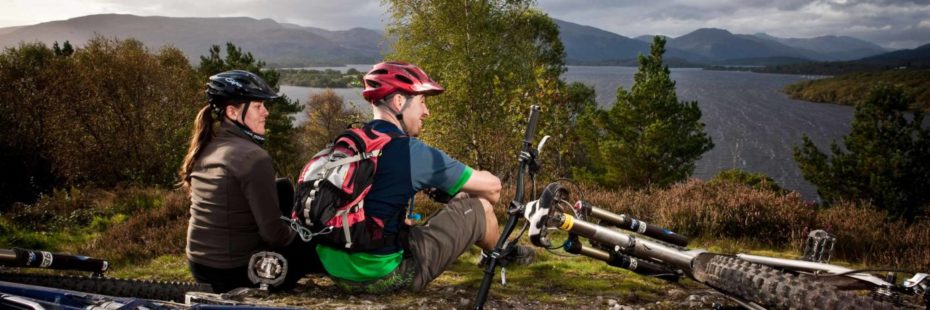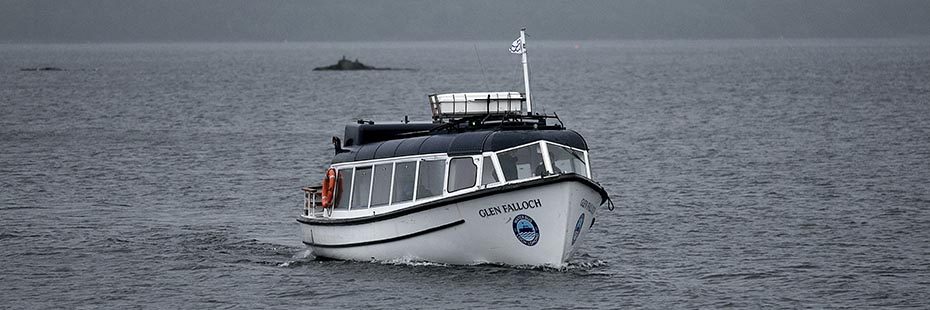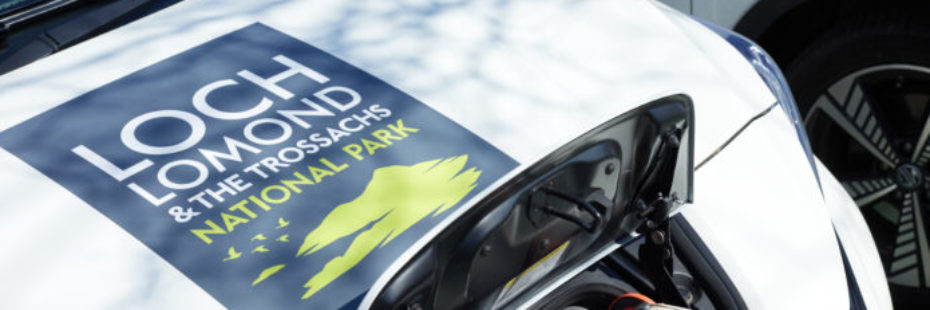
Sustainable Transport
In Scotland, transport accounts for 27% of greenhouse gas emissions, with 73% of this from road transport. Within the National Park, the use of cars remains the most popular method of transport for visitors getting to and around the National Park.
Many consumers are demanding more sustainable and active travel options, and while encouraging the use of sustainable transport may not directly save your business money, we would encourage you to support our priority to promote sustainable modes of transport to accommodate climate conscious visitors, and to contribute to tackling the climate emergency.
The pressures of parking and road use within the National Park, particularly at peak times of the year, have a negative impact on the environment and on the local communities who live and work within the National Park. If this continues it will impact on the very landscape that people come to visit.

Train from Helensburgh to Arrochar
Rail and Bus Travel
The National Park has regular connections from Scotland’s largest city, Glasgow, connecting to Balloch at the southern end of the National Park, continuing north along the West Highland route, which is considered to be one of the most picturesque train journeys in the world.
Scotrail has invested in new designated carriages for bikes and large sports equipment storage to assist the connections for visitors to enjoy active travel options. This encourages visitor behaviour away from cars to use more public transport options and to support cycling as a positive means of active travel in and around the National Park.
Businesses can support the messaging around transport choices by providing information to customers on how they can reach your town, village or location. Suggested travel routes from main population centres and international travel hubs, such as Glasgow, Edinburgh and Stirling, will help visitors to plan their journeys to the National Park; why not direct them to our National Park Journey Planner app? Providing easily accessed and clear information on your business website, booking confirmation emails and any other forms of direct communication with your customers will increase visitors’ knowledge of transport choices with insightful local knowledge.
This link provides key contacts and links to the rail and bus operators in areas across the National Park.

Cycling
The National Park has an excellent network of cycle paths and a number of cycle hire operators across the park who can provide visitors with good quality bikes to use and enjoy during their stay. The Cycling section of the National Park website provides links to cycle routes and how to combine with public transport.
Businesses can support visitors by providing cycle facilities for safe storage and can provide signposting to local hire companies. These measures can help visitors to plan ahead and to consider cycling rather than the car as a greener and more active mode of transport and to enjoy the great network of routes that connect the National Park and offer opportunities to explore and enjoy the outdoors.
Why not go a step further? Is there an opportunity for your business to directly hire bikes to your customers? If this is not feasible, are there opportunities to link up and collaborate with established hire companies locally? This could be a good way to diversify your business offering and could be an opportunity to generate additional sales of food and drinks and retail sales.

Waterbus
Water-bus routes
A network of water bus services on Loch Lomond and Loch Katrine provide an enjoyable and hassle-free way for visitors to visit some of the most popular points within the National Park. Visitors who connect their journeys this way can enjoy a cruise on the lochs with water-bus routes connecting some of the most popular points in the National Park which often experience some of the highest pressures from road traffic.

Electric vehicle
Supporting electric vehicles
While a full range of travel options are available within the National Park, it is also clear that, at present, it is not always possible for some visitors to access more remote parts by public transport. Also, the National Park aims to be as accessible for all visitors and to assist those with additional mobility needs. It is therefore an objective within the National Park, to promote the use of electric vehicles which offer a lower carbon emitting option to traditional petrol and diesel engines.
Currently some travellers using electric vehicles (EVs) may have anxiety over where the next electric charging point may be to support their journey. An integrated charging network is a much sought after development for the National Park and would provide greater assistance for electric car users, which in turn would reduce air pollution and noise pollution.
Businesses can support the network through investing in designated charging points and allocating a portion of the carpark, where available to electric only vehicles. The advantage to businesses investing in a charging point is the opportunity to generate additional business and income from EV drivers requiring a ‘pit-stop’ to recharge. Customers will be more likely to choose accommodation which supports their requirements for EV charging and, for F&B operators, the opportunity for passing customers to choose to enjoy a meal or coffee break will bring a competitive advantage to securing a larger part of the market.
Sustainable Transport in your business
Support staff to make more sustainable transport choices and use greener modes of transport and become a Cycle Friendly Employer. Consider introducing a ‘Cycle to work’ scheme to assist employees to purchase a new bike and accessories tax free. Providing support will help staff health and wellbeing and support a transition to healthier and more sustainable transport. Visit Cycling Scotland and for further information.
For business travel, develop a culture and the means to enable business-related travel to be done using more sustainable transport. This may require some investment, however, over time the cost savings to run a newer, greener, car or van will pay back and will contribute to your commitment to a more sustainable approach in all business operations. Consider also using alternative IT solutions to travel by holding meetings via video link and also enable remote working where possible.

